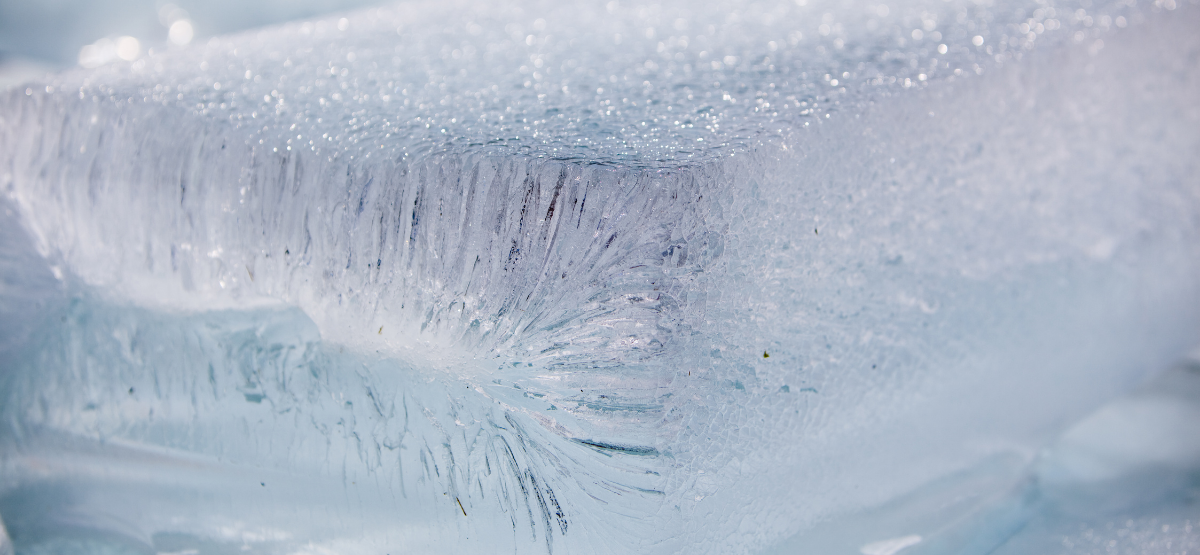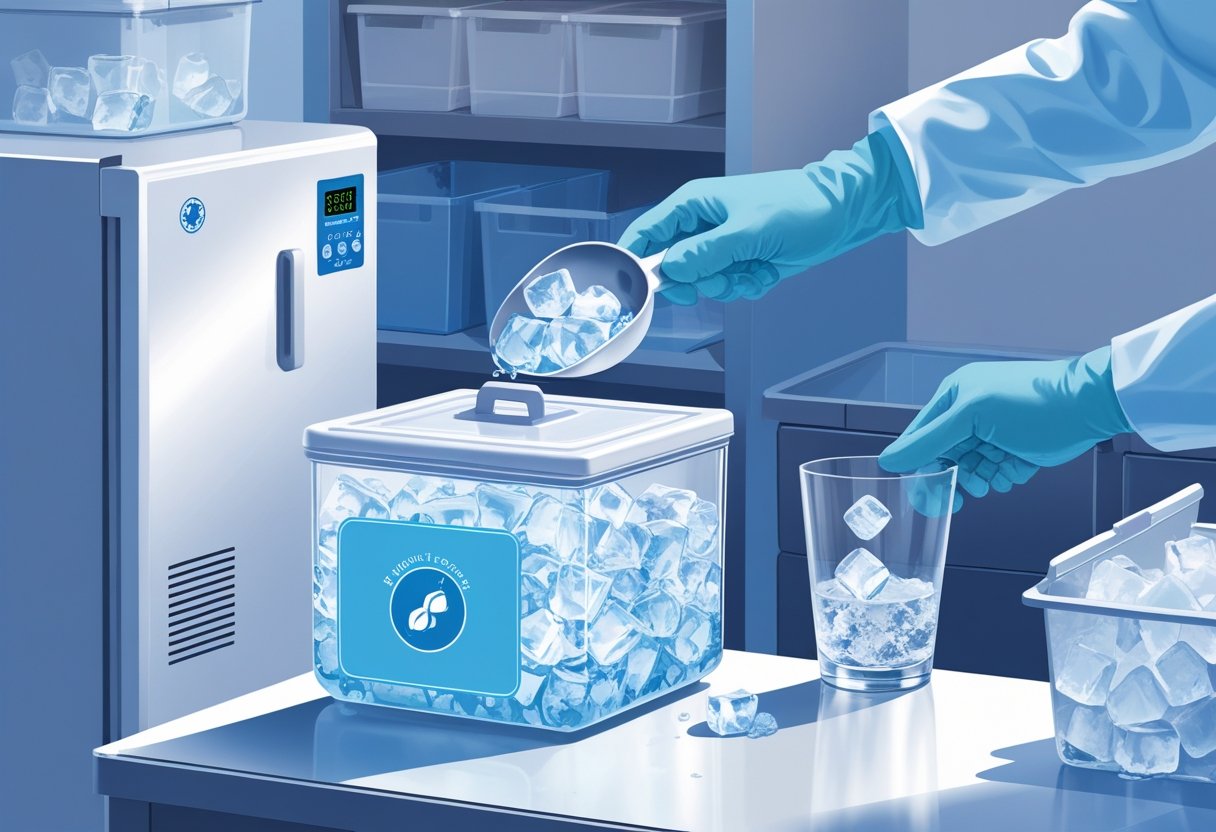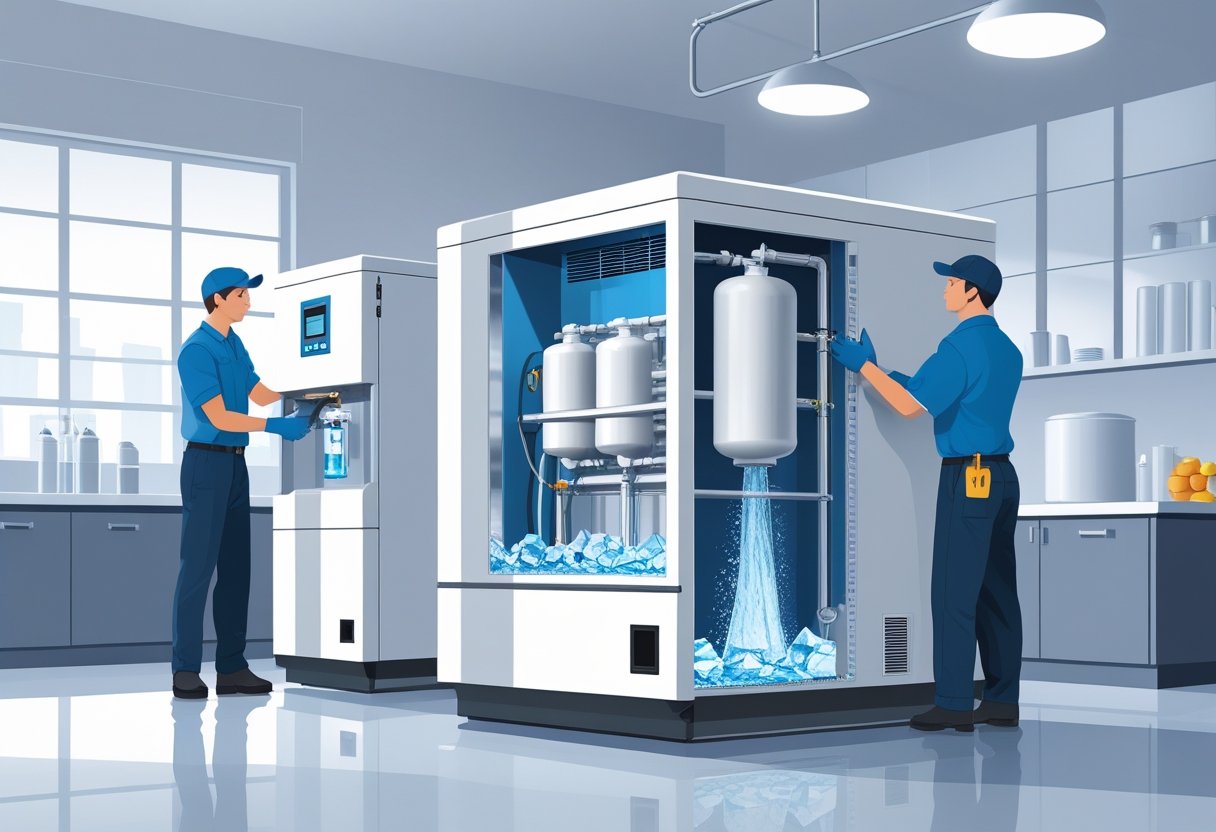proudly serving
the mid-south

One Man Revolutionized How We Live: The History of the Ice Trade
Before the ice trade, ice was the same for many as it was in ancient times: a treat. Now, anyone and everyone can enjoy the health, safety, and security of ice and cold storage.
For most of human history, ice was a luxury. Ancient civilizations in China, India, and Europe gathered ice from mountain tops and shallow basins. The rich and powerful didn’t use ice for what we primarily use it for now—preservation. Rather they used it solely as a treat. Ice was a status symbol. It’s crazy to think about.
Now, you can just rent or buy an ice machine for your business or grab an ice tray. Sometimes we can take reliable access to water and ice for granted, which is why we thought it was a good idea to take a look back on the history of ice, specifically the ice trade, as we begin the new year.
The humble beginnings of the ice trade
In 1806, a man by the name of Fredrick Tudor hatched the brilliant idea to sell natural pond ice in regional and international markets. Nobody thought to do this until then. From some deep-welled ambition, Tudor willed the industry into existence in just a few short years. To Tudor, Massachusetts was a gold mine. And he was the only one with a pickaxe.
This endeavor met its fair share of logistical and financial hardships—all small businesses do at the start. That didn’t stop Tudor’s indomitable entrepreneurial spirit. Tudor’s ice company didn’t turn a profit until almost a decade after his first shipment! His sacrifice and dedication to ravenous customer demand is the reason Tudor is known by another moniker: The Ice King.
The history books paint his early efforts and attitude as difficult, abrasive, and sour. Sometimes sweet doesn’t pay the bills. We’re glad he put himself out there and ruffled some feathers. This burgeoning industry disrupted the economy as everyone knew it, and from our point of view, humanity is healthier and safer for it.
How the ice trade revolutionized food production and industrialization
Before the ice trade, industrial food production struggled to grow beyond regional and local markets. Meat in particular struggled to stay fresh. Without any means of industrial cold storage, meat would spoil before it crossed state lines.
That all changed with the ice trade.
The advent of cold storage and transportation on America’s growing railroad system shifted the meatpacking industry to Chicago. Now, anyone in the country can enjoy affordable, fresh-cut meat. For Midwest and Southern breweries, the ice trade allowed year-round brewing. No more seasonal alcohol droughts.
Rapid global expansion
New England ice was first sold in the US South and the tropical Caribbean. Eventually, global demand exploded. It seemed as if it wouldn’t stop. Tudor, and now many copycats, jumped on this trend that wouldn’t quit.
Before the ice trade, ice was the same for many as it was in ancient times: a treat. The shift from novel food to a necessary and widely accessible commodity made water ice relatively affordable. Now, anyone and everyone enjoyed the health, safety, and security of cold storage. And thank goodness they did! Before the ice, mortality rates from food poisoning were sky-high. The ice trade saved lives and propelled civilization into a whole new “ice age.”
How did consumers purchase, use, and store ice in their homes?
Say you lived in the central United States and needed some ice in the mid-1840s. How did you get it? Where did you put it? Generally, average consumers used natural ice blocks to preserve food in what they’d call a refrigerator. The modern American wouldn’t consider this a refrigerator, though. It’s more of a prototype icebox. This wooden, two-compartment kitchen device used air to insulate ice and keep things cool for as long as possible. Like mailmen, icemen delivered large blocks of ice door to door.
Global ice demand outpaced supply
What goes up must come down. The warning signs were there: how can you harvest enough seasonal ice from the Northeast to satiate an entire planet’s demand. The answer? You cannot. If a season was too hot, your ice yield was impacted. Prices soared as supply ground to a halt. By the 1890s, global ice demand drastically outpaced supply. Shortages became rampant. People rioted!
The solution? Artificial ice. Same ice, just created with machines instead of frozen lakes. Industrialists, emboldened by advancements in vapor compression technology and the glaring need for ice, capitalized on a desperate market ready for a change.
By 1914, artificial ice production outpaced the natural ice supply. Due to the routine ice shortages and the rapid onset of World War I, the world needed industrialized ice production to stay alive and thrive.
In a few short years after World War I, the demand for natural ice declined. Consumers discovered artificial ice was safer to use and faster to buy than the natural ice they grew up with.
The global ice trade as the world knew it was over. But what a century it was!
Learn more with Memphis Ice
We really enjoyed learning about the ice trade and the early beginnings of ice. We hope you did too! Keep in mind this is not a comprehensive overview of the ice trade, rather an informed perspective on the early days of the industry we rely on, thrive in, and sometimes take for granted.
You use artificial ice every day. Take a second and think about the time, hard work, and perseverance that went into making that average ice cube into a modern marvel. It began with Tudor, and there are no plans to stop any time soon.
Stick with our blog, The Scoop, to learn more about the history and science of ice, as well as all of the great products that we sell and rent to our community.
Recent News

Why Is My Ice Machine Slow Causes and Quick Fixes to Improve Ice Production

Best Practices for Storing Ice to Maintain Purity and Extend Shelf Life

Top Reasons Ice Machines Fail and How to Prevent Costly Breakdowns

Common Ice Machine Rental Questions Answered for Event and Business Needs

How to Choose a Commercial Ice Machine for Optimal Efficiency and Reliability

Importance of Routine Ice Machine Cleaning for Health and Efficiency Maintenance



